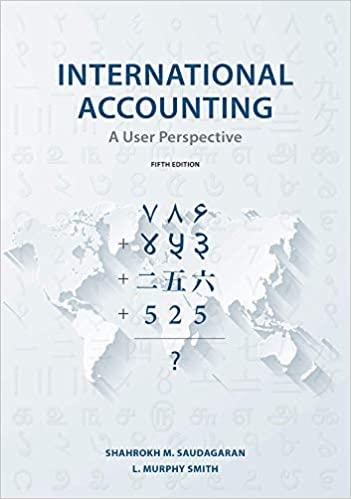Question
Analysis and Selection of a Strategic Plan The CFO forecast the financial statements for all scenarios for the next five-year period; see Ch12 Tool Kit.xlsx
Analysis and Selection of a Strategic Plan The CFO forecast the financial statements for all scenarios for the next five-year period; see Ch12 Tool Kit.xlsx for the estimated financial statements for all four scenarios. Figure 12-6 summarizes the estimated impact of each plan on financing needs not included in the preliminary financial policies (shown by the line of credit). It also shows any special dividends. resource See Ch12 Tool Kit.xlsx on the textbook's Web site. Column (1) of Figure 12-6 shows that the Status Quo plan requires drawing on the line of credit in the first year, has a maximum draw of $113 million but does not require the LOC by Year 5. This plan maintains regular dividends but does not pay any special dividends until Year 5. However, the plan would be unable to pay regular dividends in Years 14 if it did not draw on the LOC. Column (2) reports the Higher Sales Growth scenario. It requires a $143 million LOC in Year 1, which peaks at $248 million and is down to $169 by Year 5. The management team quickly rejected the Status Quo and Higher Sales Growth scenarios but spent several hours discussing the other two plans. Neither the Improve Operations (Only) plan nor the Operations and Growth plan requires drawing on the line of credit. This is because both plans improve asset utilization, allowing MicroDrive to reduce its inventories (which generates positive cash flow) and make only a much smaller investment in new PP&E in the upcoming year (see the Tool Kit for details). As a consequence, neither plan needs to draw on the LOC. However, there are some important differences between the plansthe Improve Operations (Only) plan pays more in special dividends during the next five years, but the Operations and Growth plan has a greater value of operations and stock price. Think about why the plans have different expected outcomes. The Operations and Growth plan has higher sales growth rates, which means its investments in operating capital are greater, especially in the first couple of years. The net result is lower free cash flow during the forecast period but higher projected free cash flow beyond the forecast horizon, giving it a much larger horizon value. FIGURE 12-6 Key Inputs and Financial Plan Outcomes for Possible Strategic Initiatives (Millions of Dollars, Except for per Share Data) resource See Ch12 Tool Kit.xlsx on the textbook's Web site. MicroDrive's managers have a long-term perspective, so they chose the Operations and Growth plan. This is an example of value-based management because MicroDrive is using the free cash flow valuation model to identify value drivers and guide managerial and strategic decisions. Figure 12-7 shows selected operating results and financial outcomes for the Operations and Growth plan. After the initial major expenditure on the strategic initiative in 2020, the ROIC rebounds to 13.5% in subsequent years, well above the WACC.1 Based on the ratios at the end of the forecast period, MicroDrive still has a bit more debt than the industry average (causing a lower than average time-interest-earned ratio) and pays out a higher proportion of its net income. We will examine payout and debt policies in Chapters 14 and 15. FIGURE 12-7 Operating Results and Financial Outcomes for the Operations and Growth Plan (Millions of Dollars, Except for per Share Data)
SELF-TEST What is value-based management and how is it used?
Step by Step Solution
There are 3 Steps involved in it
Step: 1

Get Instant Access to Expert-Tailored Solutions
See step-by-step solutions with expert insights and AI powered tools for academic success
Step: 2

Step: 3

Ace Your Homework with AI
Get the answers you need in no time with our AI-driven, step-by-step assistance
Get Started


